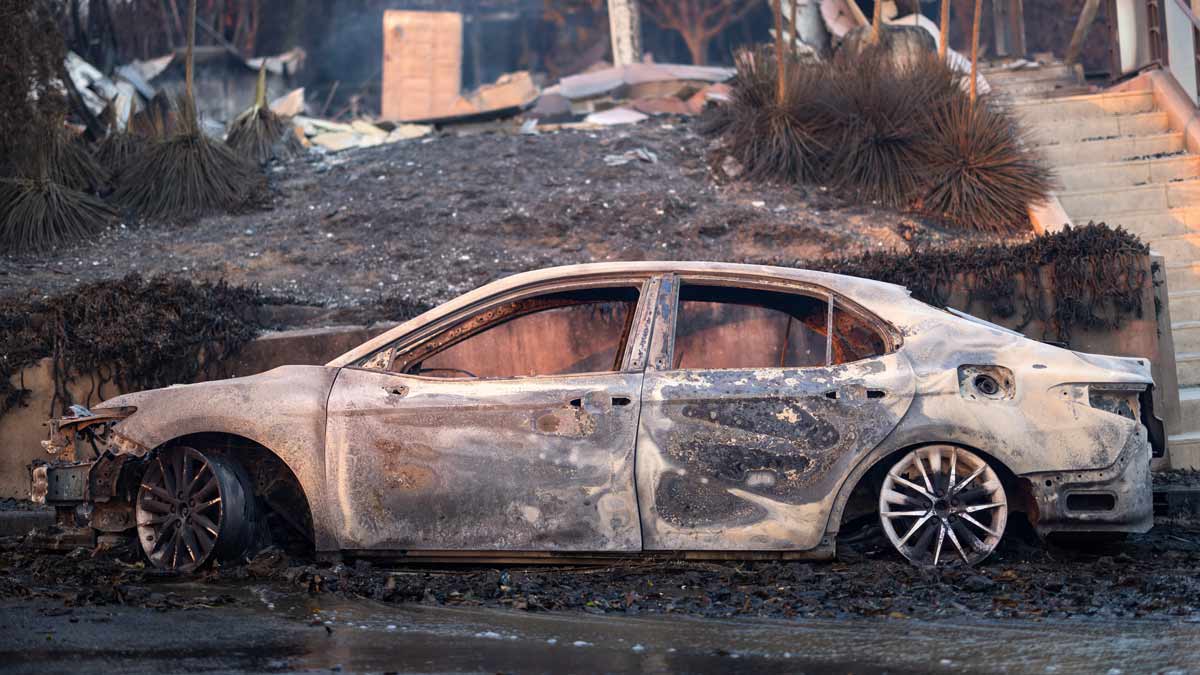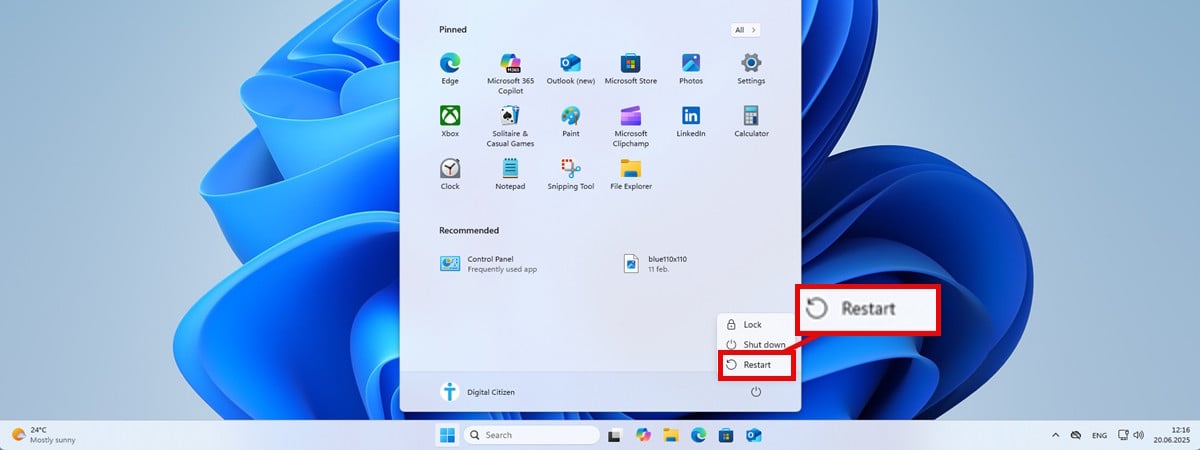
Gather information. Collect details about the accident: names, contact information, and insurance policy information for anyone involved. Take photos of the damage to your car and any other vehicles and property, and write down or photograph license plate numbers. If you can, try to also record the involved cars’ vehicle identification number (VIN), the 17-digit code that can be found at the bottom of the driver side of the windshield, or inside the driver’s door frame. Take notes in a video or on a notepad about road details and conditions. Note the direction you were traveling at the time of the incident and what the weather was like. These details will be useful later. In the case of returning to a car that has been fire damaged or flooded, you will likewise need to chronicle the scene with photography and notes. Of course, do not approach a burning car. Instead, move downwind and away, and call the local fire department.
File a police report. If your car was stolen, vandalized, or involved in a traffic crash or a hit-and-run, a police report is a key component in the paper trail of the claim process. If the incident is serious—especially if there are injuries or death—call 911. If it’s a minor collision, look up a non-emergency number for the local police, note details about your location, and ask for an officer to assist you. Assuming the police can access the scene of the incident, when they approach, calmly relate the details of what happened. If police can’t or won’t come to the scene, many jurisdictions will allow you to submit a police report online, by mail, or in person at the police station. You can find this out by looking up the local police department, which should have jurisdiction over the scene of the incident. Search that department’s website for an option to file a report. (Some agency websites are better than others.) However you make your report, be as detailed as possible. If you give a verbal account, try to make sure your words are recorded accurately.
Call your insurer as soon as possible. As soon as the police say you’re free to go, or once you’ve finished filing your own police report, contact your insurer. It doesn’t matter who was at fault—if that’s even been determined yet. Even minor crashes can cause expensive damage to cars, especially newer models equipped with sensors and cameras for systems like automatic emergency braking, adaptive cruise control, and blind spot warning. If your car has been damaged by something else—storm winds, vandalism, etc.—you’ll still want to let your insurer know so that it can assign a claims adjuster to your case as soon as possible. In the event of a natural disaster, claims adjusters will most likely be very busy, so you’ll want to be quick to reach out, and be dogged in making sure someone’s working on your case. There may be a feature on your insurer’s website that allows you to monitor the progress of your claim. If not, call or email at least once or twice per week to get updates on its status.
Find out what documents you can submit. Your insurance company may require specific claim forms and—if you filed one—a copy of the police report. Find out by asking the insurer’s claims adjuster or case agent, or by searching on the insurer’s website, where there may be detailed, step-by-step information on how to proceed with a claim. Keep an eye out for emails or calls from your insurer requesting more information. The faster they get what they need from you, the quicker you’ll get paid.
Use the mobile app. Many insurers now have apps that let you report a claim, add photos, check its status, upload photos, check your deductible, schedule an appraisal, reserve a rental car, and request reimbursements for towing. Some apps even allow you to notify the insurance adjuster about what happened by visually re-creating the events and circumstances pertinent to the claim. Be creative: You can draw a diagram of the incident, along with arrows to indicate movement of the vehicles and people involved, or you could even make a video using paper cutouts or toy cars. Be proactive and download the app in advance, and sign in so that it’s connected to your policy.
Get information about time limits and deadlines. There may be critical deadlines associated with your claim. To avoid missing them, ask your insurer the following:
• What is the time limit for filing claims and submitting bills?
• Is there a time limit for resolving claims disputes?
• Is there a deadline for submitting additional information?
• When can you expect the insurance company to contact you?
Verify the claims adjuster’s identity. If an adjuster is coming to meet you, ask the insurance company the name of the person it will send. When he or she shows up, ask for identification. Keep in mind that scammers exist, particularly after natural disasters. Also, be present while the adjuster looks at your car, to make sure that they examine all the damage.
Document all contact with the insurance company. Try to correspond with the insurance company and anyone involved in the incident via email, to create a permanent record. Take notes about the claims adjuster’s visit, and about any other correspondence with your insurer, including phone calls, as well as your observations about what was examined, what was discussed, and even the adjuster’s attitude. Keep your own copy of each document you give to the adjuster, including, potentially, a list of personal property (the contents of the car) that may have been lost or damaged. If the adjuster advises you to start repairs, get that permission in writing and note any restrictions. If the first adjuster is replaced during the claims process, a paper trail will serve as proof that the initial adjuster approved the start of repairs. Any documentation you have will be useful if disagreements have to be resolved in court.
Get additional estimates, if necessary. Insurance companies may have relationships with certain repair shops, but if you have a shop you trust, get an estimate to make sure you’re comfortable with the insurer’s assessment. Keep in mind that if your car has been damaged by a flood or fire, regardless of what the insurance company’s claims adjuster says, the vehicle might be a total loss—meaning, the insurer will pay you the worth of the vehicle rather than get it repaired. In particular, water damage can become worse over time as wiring and metals corrode, and mold can develop in carpet and upholstery.
Be persistent. If you feel that the insurer isn’t considering the full extent of the damage to your car, or that the compensation is too low, ask the insurance company’s representative to explain, in writing, how they calculated the estimate. The representative should also include any reason certain items aren’t covered and whether there are any coverage limits. If you think the policy language is misleading, search for an attorney who specializes in insurance law. According to the Consumer Federation of America, courts have consistently ruled in favor of policyholders regarding policy ambiguities. You can also file a complaint with your state’s Department of Insurance.
Source link











